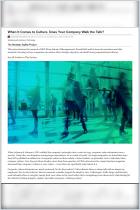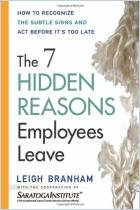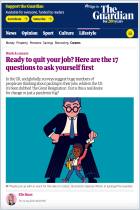
Article
Toxic Culture Is Driving the Great Resignation
Research using employee data reveals the top five predictors of attrition and four actions managers can take in the short term to reduce attrition.
Recommendation
The Great Resignation has taken many by surprise. Now, a comprehensive study of 34 million employee profiles sheds light on the main reasons for the record exodus – and toxic workplace culture tops the list. Writing for MIT Sloan Management Review, three scholars break down the results of the survey and offer actionable advice for managers seeking to improve their office culture and boost employee retention.
Summary
About the Authors
Ben Zweig is an adjunct professor of economics at New York University’s Stern School of Business and CEO of Revelio Labs. Senior lecturer at the MIT Sloan School of Management Donald Sull is co-founder of CultureX. Charles Sull is a co-founder of CultureX.





















Comment on this summary or Start Discussion